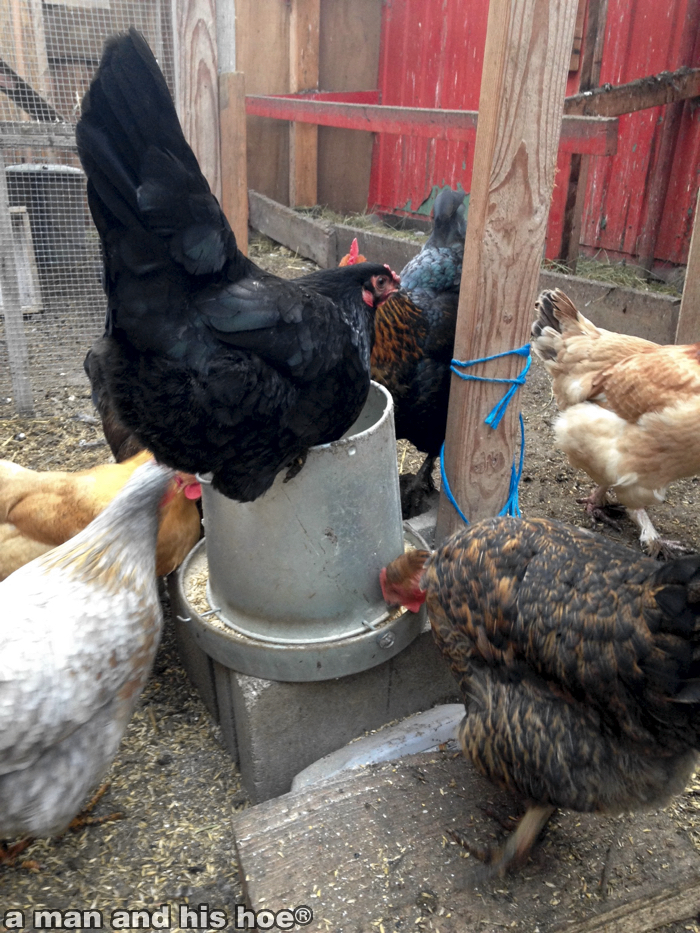Your cart is currently empty!
Category: About My Chickens
-
It’s in Their Eyes
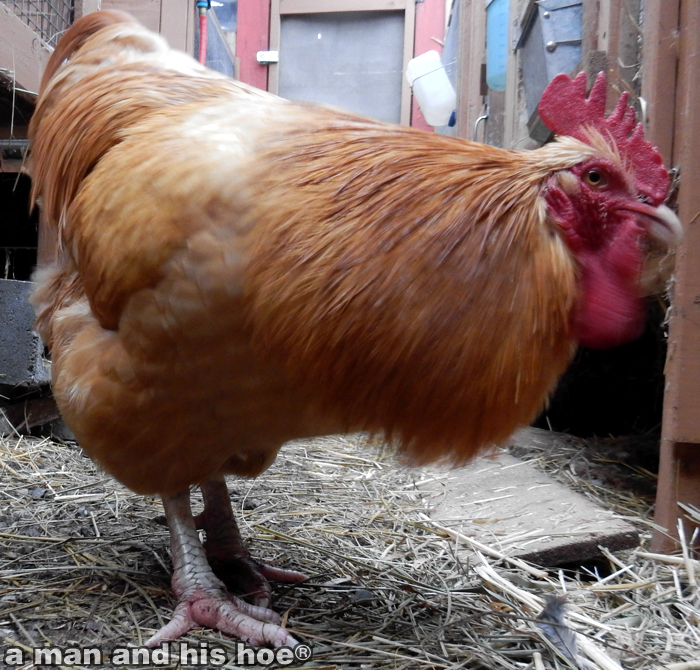
Chickens have such intense, beautiful eyes. When you are close to them, they follow your every move. Billy can see me from a long way off. If he sees me on the back porch, he’ll come running to see if I have a treat for him. I guess I’m lucky to have a chicken who greets me in the morning. How many people get to say that.
Though with their piercing eyes, when thirty or more chickens come running after you, it can be startling. Imagine what thirty pairs of intense eyes chasing you looks like.
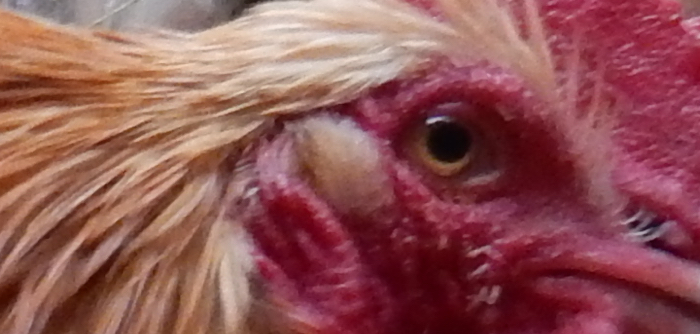
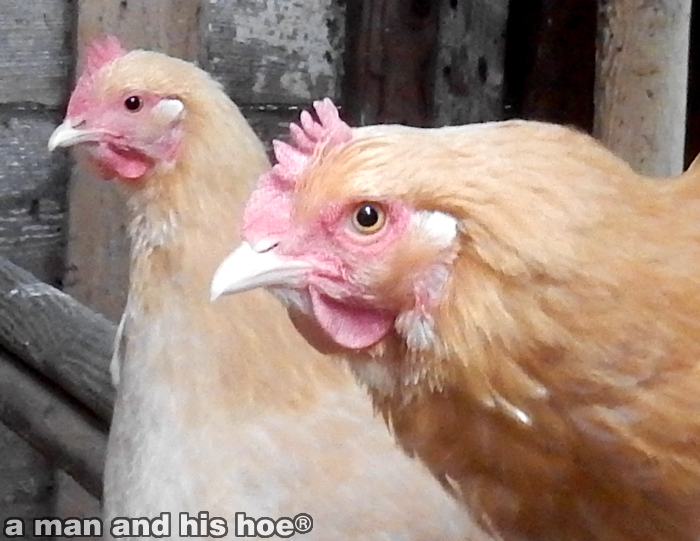
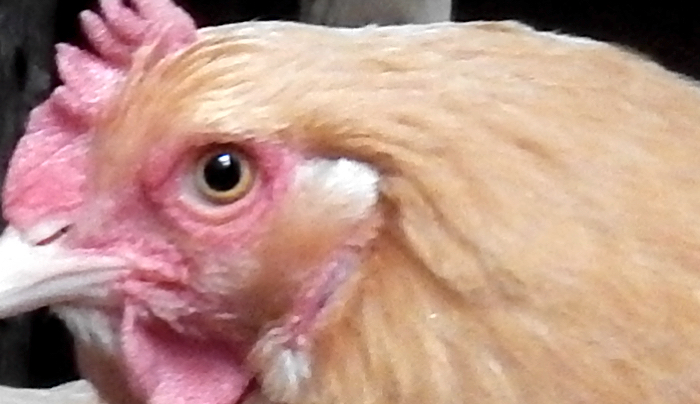
-
The Peanut Gallery
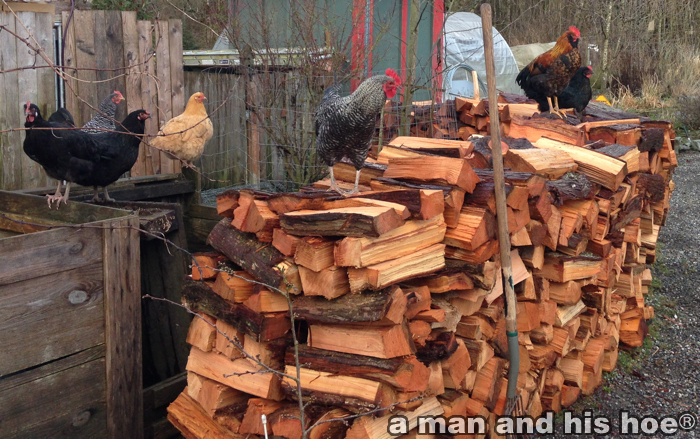
If they’re not scratching for bugs or running around courting or taking sunbaths, chickens love hanging out in the peanut gallery. From up in the peanut gallery, they can keep an eye on what is happening down below. For chickens there is a lot to watch. Which rooster is the dandiest. Which rooster fetches the best earthworms. Where the best nesting spots are. Who has the juiciest gossip to share.
Chicken society is complex. Chickens have a lot to do and see.
-
Beyond Fashion
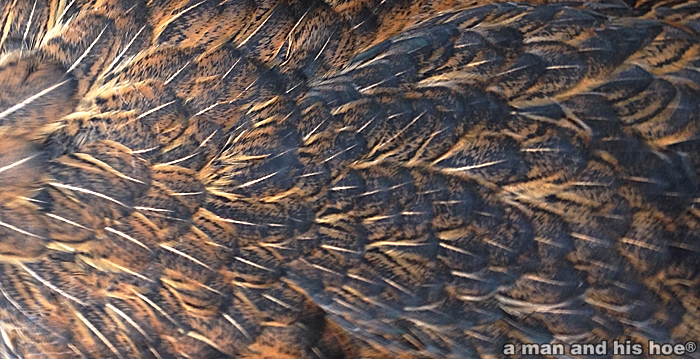
Feeding chickens is like attending a fashion show. Only, instead of aloof models parading down a runway, I watch contented chickens who have no idea how fabulous they look. Why is it that fashion models never smile? They look so unhappy. It doesn’t make me want to buy their clothes. I’m not the only one puzzled by this. According to Professor Ketelaar in the New York Times article Solved: The Mystery of the Miserable Models, “lower status individuals appear to smile more than higher status individuals.” And since fashion designers are trying to cast an air of high status to their line of clothes, they don’t allow their runway models to smile.
Well, maybe if they got to wear clothes with designs as fabulous as my chickens, they’d smile more.

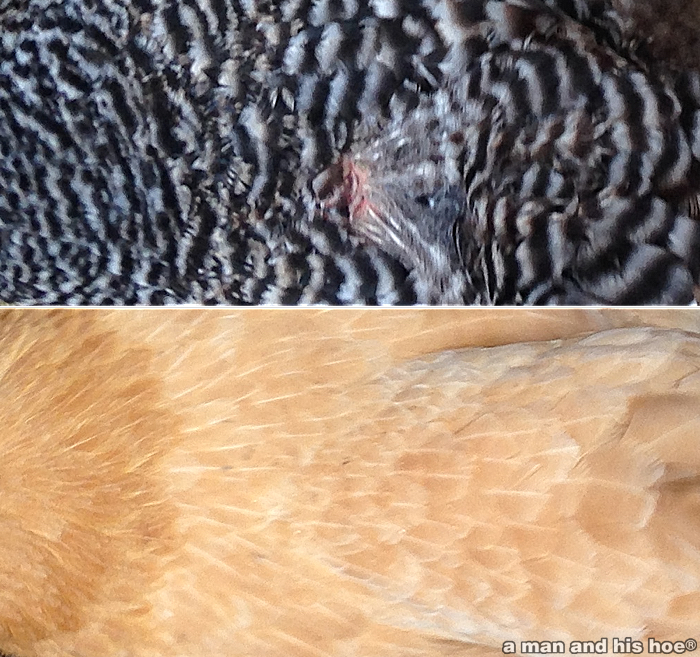
-
Curious Chickens

Chickens are as curious as cats which are as curious as dogs which are as curious as ? Curiosity is universal. Researchers have identified many parts of the brain such as the anterior cortices, the striatum, the hippocampus and dentate gyrus, the parahippocampal gyrus, the amygdala, the anterior pituitary, the nucleus accumbens, the precuneus, and caudate nucleus as being involved in curiosity.
So when Miasa and her 11 week old chicks come running to see what we’ve brought home in the truck, their brains are firing away on all cylinders, as are the brains of many of the other chickens. They’ll keep investigating what we’ve brought until their curiosity is satisfied.
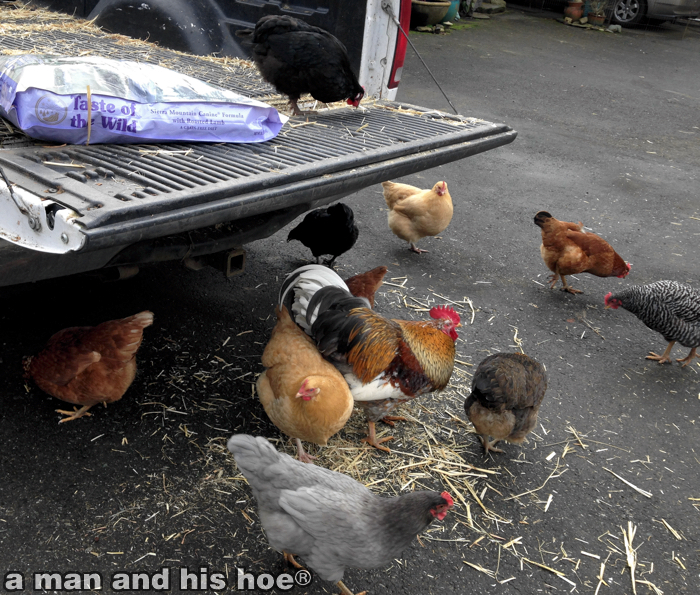
-
Chickens Can Solve Problems Too
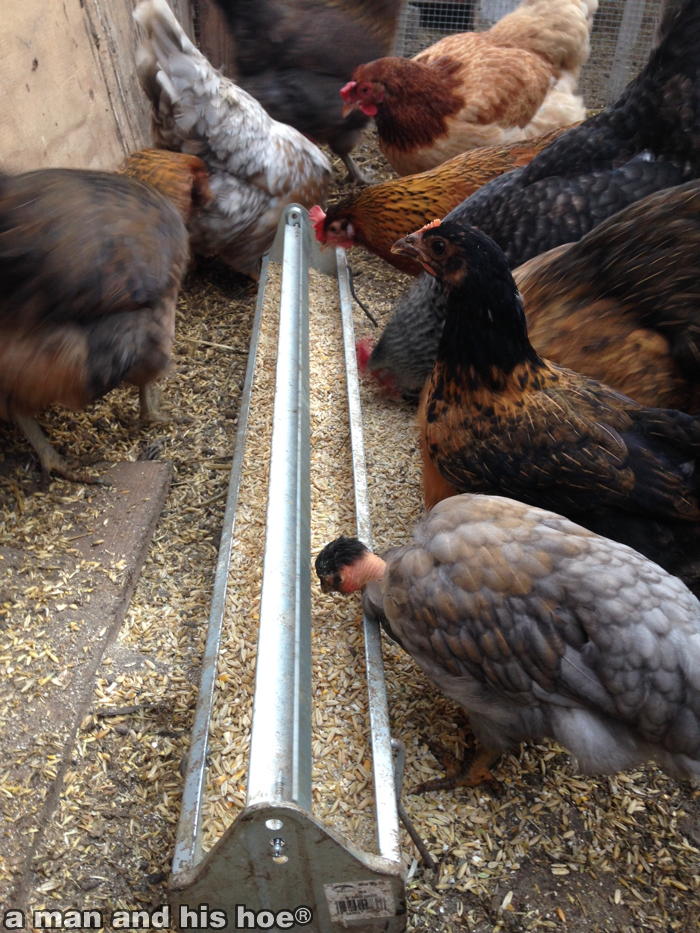
It’s breakfast time and the chickens are crowding around the feeders.
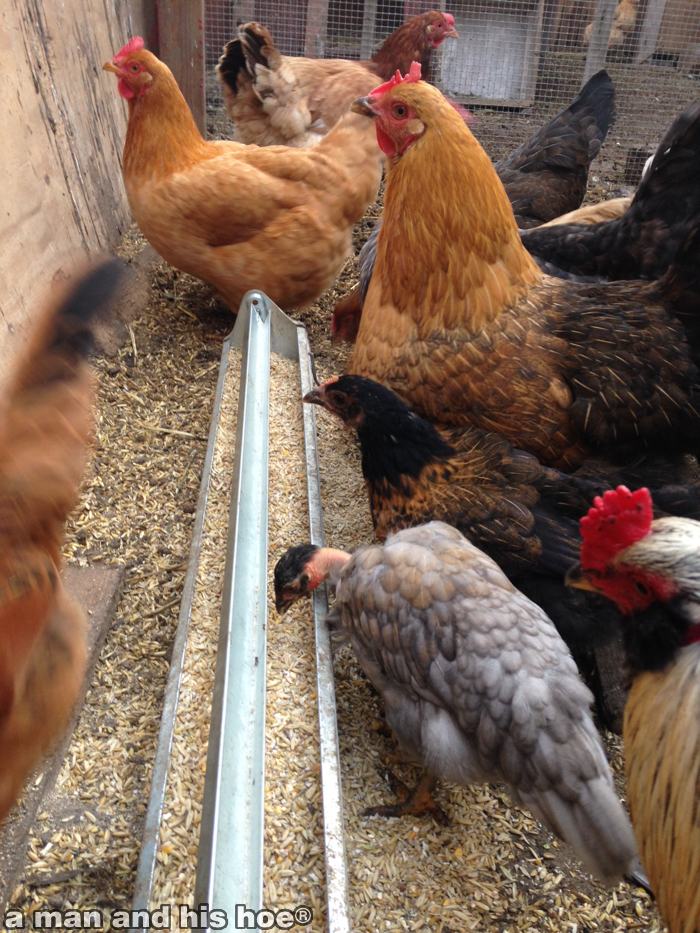

Instead of huddling with the other chickens around the feeder, this hen has learned that she can have the whole feeder to herself by flying to the top of it and sticking her head into it. Which goes to show that chickens have some ability to look at a situation and figure out a solution that works best for them.
